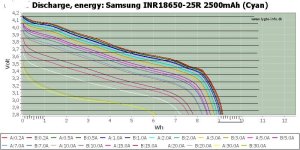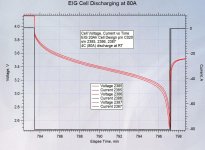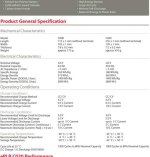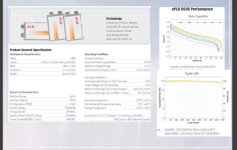DogDipstick
100 kW
I could do this, a datalog of a "HK" "Lipo" ( Pulse, 6s 5000mAh, or Turnigy blue, or Graphene) on a direct comparison of a "EV" "Kia" 4.5Ah lipo. I would have to use a 25oomAh 18650, I only have powertool 18650 here, I could do a pair inparallel for a single graph, of 5Ah.
All at 0.2C... ( dont know where or why you like this low arbitrary number, (Puekert? w lithium? IDK. Standard to quote mebbe?) ) I like to test at 0.5C).
Let me find the log.. or I'll do three controlled new tests on the powerlab.. I'll update this post with three graphs with Ah over TIme.. I can generate a PID controlled SOC map for al three cells and show you that toto.
All at 0.2C... ( dont know where or why you like this low arbitrary number, (Puekert? w lithium? IDK. Standard to quote mebbe?) ) I like to test at 0.5C).
Let me find the log.. or I'll do three controlled new tests on the powerlab.. I'll update this post with three graphs with Ah over TIme.. I can generate a PID controlled SOC map for al three cells and show you that toto.






